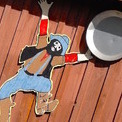Search the Community
Showing results for tags 'astro'.
The search index is currently processing. Current results may not be complete.
-
Hello all, first time poster long time fan. My question is it possible to take photos of the Milky Way with the D-Lux 7 and if so would anyone have any suggestions for settings. Regards
-
Hello Leica-land, Been doing some lurking in the forums for some time, but can't find a definitive list of lenses suitable for astrophotography. Main things I'm looking at are fast aperture, low coma, flat field performance. Fast aperture may be not a total dealbreaker with the high iso abilities these days (using an M10-R BP, currently) especially if a tracking mount is used. That said, I haven't seen too many folks doing astro with Leica cameras/glass, though I know it's possible given my first Milky Way run of the season this year. See below for my shot of the Milky Way competing against the light pollution of NYC taken this weekend. Currently I've only tested my existing lenses (Zeiss 21 2.8 and 50 Lux 1.4. ASPH) and both seem to have horrible coma even stopped down. I mostly used the Zeiss and even at f4 I found spots of coma, though interestingly not uniform (maybe there's some field curvature going on here where one corner is better than another?) I've read about Leica's own fast wides, but most seem out of my price range at the moment. I'm definitely getting a Zeiss 35mm 1.4 which may fit the bill for this use as it's pretty darn near optically perfect, but are there any wider lenses the community could recommend? or am I doomed to lust/save for the 21Lux or 28 Lux/cron?
- 56 replies
-
- 3
-

-
- astro
- astrophotography
-
(and 3 more)
Tagged with:



